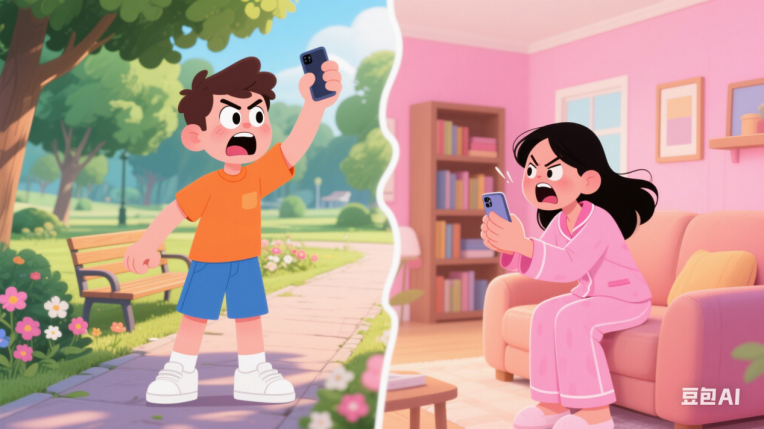
Social media has become a central yet controversial part of modern life. While platforms like TikTok and Instagram connect billions globally, they also raise concerns about mental health, privacy, and misinformation.
For many, social media fosters belonging. Fans of music, sports, or TV shows find like-minded communities online, sharing memes, theories, or artwork. Studies show these interactions reduce loneliness, boost happiness, and even strengthen the immune system. Such virtual bonds can be as meaningful as in-person friendships, offering support during tough times.
However, the disadvantages are significant. Algorithms (算法) often prioritize extreme content, and debates over data privacy persist. A 2024 study in JAMA Network Open revealed that active social media users — especially those frequently posting or arguing about politics — reported getting annoyed more easily. This emotional state, marked by impatience and anger, can strain relationships and harm productivity. Though the study doesn’t prove social media causes these feelings, it highlights a clear trend: the more time spent actively engaging online, the higher the risk of negativity.
How can we maximize benefits while minimizing harm? First, we can set time limits. Plan specific periods for social media — treat it as planned leisure, not a constant habit. Second, avoid heated debates. Scrolling through news is less stressful than arguing. If a post upsets you, pause before reacting. Lastly, follow accounts that inspire joy (e.g., hobbies, art).
Social media is neither good nor bad — it’s about how we use it. Platforms offer entertainment, news, and connections but require self-awareness. By setting boundaries and focusing on positive interactions, we can enjoy memes (表情包), fan communities, and updates without sacrificing mental well-being. Remember, real-life moments — like face-to-face conversations or pursuing personal goals — deserve just as much attention as our online lives. Finding this balance ensures social media enriches rather than controls us.
原创编写 版权所有 侵权必究! 每日更新 个性化阅读 英语飙升!
1.1. What does the underlined word “fosters” mean in Paragraph 2?
A Destroys.
B Promotes.
C Ignores.
D Controls.
解析:选B。词义猜测题。从第二段中划线词后文“Fans of music, sports, or TV shows find like-minded communities online, sharing memes, theories, or artwork. Studies show these interactions reduce loneliness, boost happiness, and even strengthen the immune system.”可知,人们在社交媒体上找到志同道合的群体,这些互动减少孤独感、提升幸福感。由此可知,对许多人来说,社交媒体提升了归属感。即“fosters”意为“促进”,与“promotes”意思相近。故选B。
2.2. Who showed easier annoyance according to the 2024 study?
A People who rarely use social media.
B Users who passively read political news.
C Active posters arguing about politics.
D Teenagers avoiding online communities.
解析:选C。细节理解题。根据第三段中的“A 2024 study in JAMA Network Open revealed that active social media users — especially those frequently posting or arguing about politics — reported getting annoyed more easily. ”可知,研究显示,活跃的社交媒体用户——尤其是那些经常发帖或讨论政治的人——更容易恼怒。故选C。
3.3. Which method is NOT recommended to reduce social media’s harm?
A Setting time limits for usage.
B Following inspiring accounts.
C Preventing involvement in arguments.
D Avoiding scrolling through news.
解析:选D。细节理解题。第四段中的建议包括“set time limits”限制上网时间(A),“follow accounts that inspire joy”关注带来正能量的博主账号(B),“avoid heated debates”避免激烈的争论(C),“Scrolling through news is less stressful than arguing.”浏览新闻的压力比争论要小,即作者建议浏览新闻而非避免浏览新闻。故选D。
4.4. What is the author’s main purpose in writing the last paragraph?
A To emphasize balancing online and offline life.
B To encourage people to delete social media apps.
C To criticize social media’s negative effects.
D To promote specific social media platforms.
解析:选A。推理判断题。末段反复强调“real-life moments deserve attention”和“finding this balance”,这表明作者主张平衡线上线下生活。故选A。